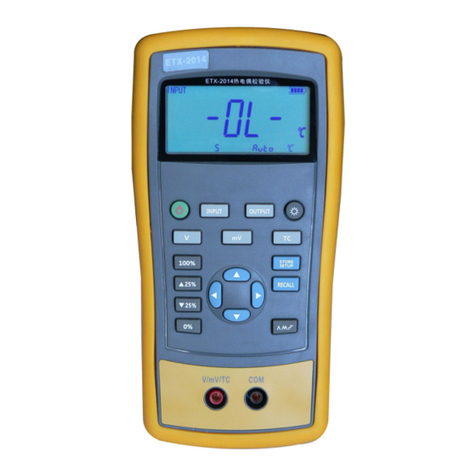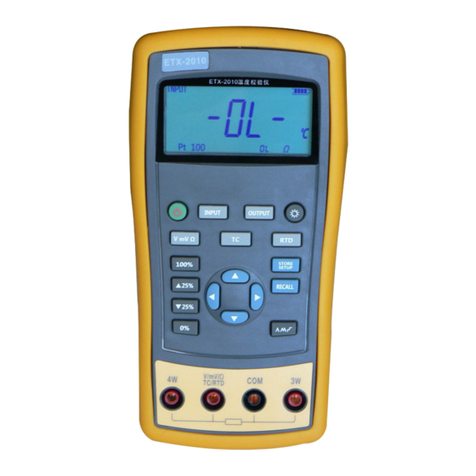
Contents
1 Installation........................................................................................................................................ 1
2 Description....................................................................................................................................... 1
2.1 General Technical Specifications..........................................................................................3
3 Quick Reference............................................................................................................................... 4
3.1 Front Panel............................................................................................................................ 4
3.2 Introduction of Keys..............................................................................................................4
3.2.1 Power On/Off Key..................................................................................................... 4
3.2.2 Direction Key............................................................................................................. 5
3.2.3 Basic Function Keys.................................................................................................. 5
3.3 Introduction of Rear Panel.................................................................................................... 5
3.4 User Interface........................................................................................................................ 6
3.4.1 Interface of Measurement Display.............................................................................7
3.4.2 Interface of Measurement Setting..............................................................................7
3.4.3 Interface of List Scanning.......................................................................................... 7
3.4.4 Interface of System Setting........................................................................................ 7
4 Basic Function Operation.................................................................................................................7
4.1 Startup & Shutdown.............................................................................................................. 7
4.2 Parameter Selection...............................................................................................................8
4.2.1 Frequency Selection................................................................................................... 8
4.2.2 Level Selection...........................................................................................................8
4.2.3 Offset Selection.......................................................................................................... 8
4.2.4 Range Selection..........................................................................................................9
4.2.5 Output Impedance Selection...................................................................................... 9
4.2.6 Measurement Display Speed Selection......................................................................9
4.2.7 Main Parameter Selection........................................................................................ 10
4.2.8 Secondary Parameter Selection................................................................................10
4.2.9 Equivalent Mode Selection...................................................................................... 10
4.2.10 Comparator Setting................................................................................................ 10
4.2.11 List Scanning Function...........................................................................................12
4.2.12 DCR MODE...........................................................................................................13
4.2.13 Electrolytic Capacitor Mode.................................................................................. 13
4.2.14 Relative Function................................................................................................... 13
4.2.15 Data Retention Function........................................................................................ 13
4.2.16 Data Recording Function (Maximum Value, Minimum Value, Average Value)...14
4.2.17 Correction Function............................................................................................... 14
4.2.18 Backlight Brightness Setting..................................................................................16
4.2.19 Power-on Parameter Setting...................................................................................16
4.2.20 Buzzer Switch Setting............................................................................................16
5 Basic Performance Indicators.........................................................................................................16
5.1 Measurement Parameter......................................................................................................17
5.2 Equivalent Mode................................................................................................................. 17
5.3 Basic Accuracy.................................................................................................................... 17
5.4 DCR MEASUREMENT ACCURACY.............................................................................. 19
5.5 Test Signal Frequency......................................................................................................... 19
5.6 Test Signal Level................................................................................................................. 19
5.7 Output Impedance............................................................................................................... 20
5.8 Measurement Display Range.............................................................................................. 20
6 External Interface Instructions....................................................................................................... 20
6.1 USB INTERFACE.............................................................................................................. 20
6.2 RS232 INTERFACE........................................................................................................... 20
7 SCPI COMMAND REFERENCE................................................................................................. 20
8 Precautions and Warranty...............................................................................................................21

































